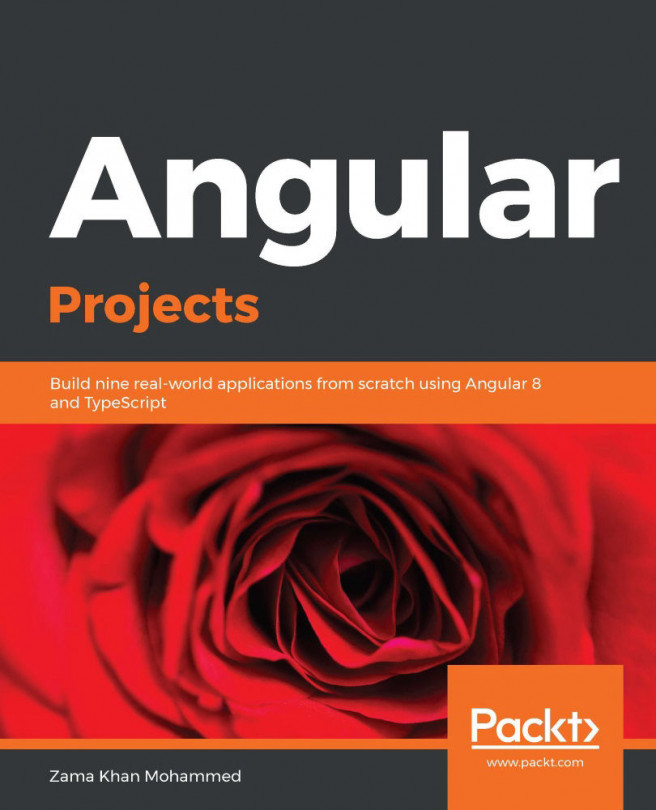Router-first architecture
Router-first architecture is a way to:
- Enforce high-level thinking
- Ensure consensus on features, before you start coding
- Plan for your codebase/team to grow
- Introduce little engineering overhead
There are seven steps to implementing router-first architecture:
- Develop a roadmap and scope (Chapter 7)
- Design with lazy loading in mind (Chapter 7)
- Implement a walking-skeleton navigation experience (Chapter 7)
- Achieve a stateless, data-driven design (Chapters 7 and 10)
- Enforce a decoupled component architecture (Chapters 8, 11, and 12)
- Differentiate between user controls and components (Chapter 11)
- Maximize code reuse with TypeScript and ES features (Chapters 8, 10, 11, and 12)
Each step will be covered in more detail in this and coming chapters, as noted previously. Before we go over these steps at a high level, let's first cover feature modules in Angular,...

































































